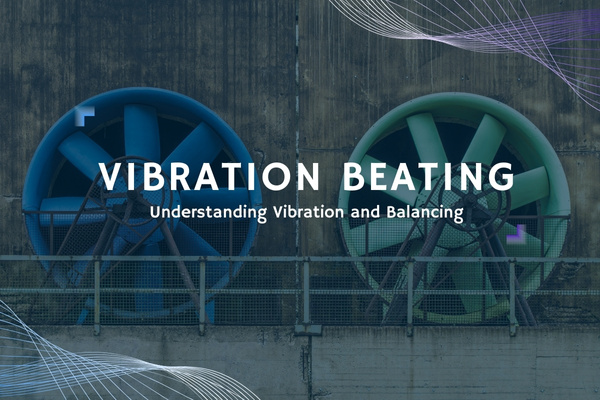
Understanding Vibration Beating in Vibration Analysis and Balancing
In vibration analysis and balancing, certain phenomena can complicate accurate diagnostics. One such phenomenon is vibration beating, which can lead to fluctuating vibration amplitudes and make balancing difficult.
What is Vibration Beating?
Vibration beating occurs when two or more sources of vibration operate at similar frequencies. This interaction causes the overall vibration amplitude to increase and decrease in a repeating pattern. For example, if two motors with slight imbalances run at nearly the same speed, their vibrations can either amplify or cancel each other out, creating a continuous cycle of rising and falling vibration levels.
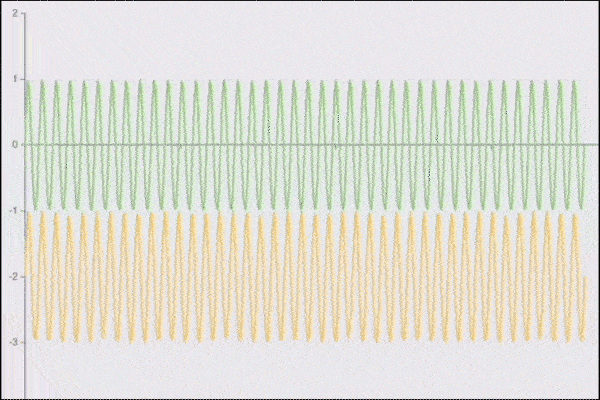
As shown in the GIF, when two sine waves with close frequencies (like 40 Hz and 41 Hz) interact, the resulting signal shows a periodic rise and fall in amplitude—this is the beating effect. The same happens in mechanical systems with two similar vibration sources
Imagine two motors running side by side, both with slight imbalances. Sometimes their vibrations add up when they are in phase, increasing the amplitude. At other times, they cancel each other out when they are out of phase, reducing the vibration. This ongoing fluctuation is what we call vibration beating.
The Challenges of Vibration Beating for Balancing
For those involved in balancing machinery, vibration beating can make the process difficult. The constantly changing amplitude can distort readings, making it hard to balance the machine using standard methods. You’ll notice periodic increases and decreases in vibration, which may even be audible. This problem usually occurs when two nearby machines, like motors, send conflicting vibrations.
In simpler cases, turning off one machine can eliminate the problem, allowing you to balance the other. However, in more complex setups—like when a motor and turbine are both imbalanced and running at similar speeds—shutting off one machine may not be an option.
Common Scenarios Where Vibration Beating Occurs
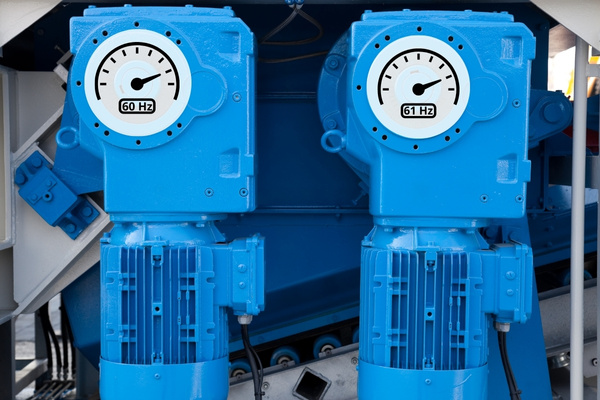
Adjacent Motors with Similar Imbalance
When two nearby motors with slight imbalances run at nearly the same speed, their vibrations interact, causing beating. This fluctuation makes it hard to isolate and balance either motor.
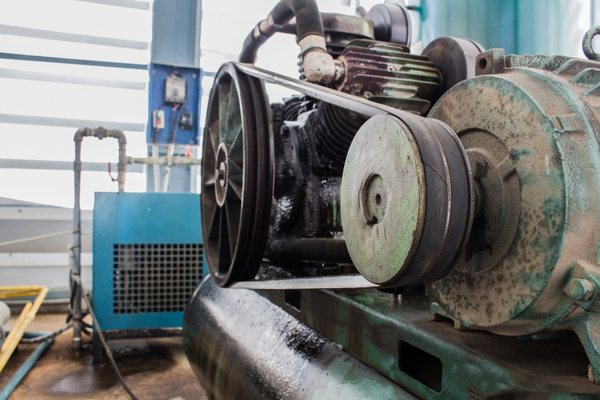
Belt-Driven Systems with Imbalanced Pulleys
In belt-driven setups, imbalanced pulleys on both the motor and driven component can cause vibration beating if they rotate at similar speeds. This interference complicates the balancing process.

Multiple Vibration Sources in Complex Systems
In large industrial setups, multiple machines running at similar frequencies can lead to beating, especially when it’s difficult to shut down machines for correction.
Solving Vibration Beating with Software
The most effective solution for complex vibration beating situations is to increase the resolution of your vibration analysis. By increasing the resolution, you can separate closely spaced frequencies that would otherwise appear as a single peak, resolving the beating.
Higher resolution allows the FFT (Fast Fourier Transform) to distinguish between the two interacting frequencies, turning one peak into two distinct ones. This clearer separation helps you focus on the correct vibration source for balancing.
Why Increasing the Lines of Resolution Separates Frequencies in Vibration Beating
Increasing the lines of resolution reduces the distance between each point in the frequency spectrum, allowing you to see small differences in frequency that were previously blended together. This separation helps you pinpoint the exact frequencies causing the beating.
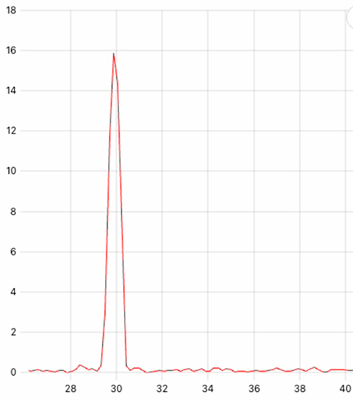
Low lines of resolution spectrum
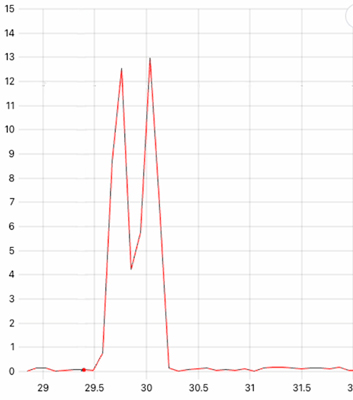
High lines of resolution spectrum
How the Beating Period Reveals the Frequency Difference
The period of the beating provides valuable information about the difference in frequency between two vibration sources. When two vibration signals are close in frequency, the time interval between the peaks of the beating effect—known as the period—can be used to calculate the frequency difference.
For instance, if you have two signals, one at 40 Hz and another at 41 Hz, the period of the beating would be 1 second. This is because the difference between the two frequencies is 1 Hz, meaning that the amplitude fluctuations caused by the beating will repeat every second.
This relationship can be summarized as:

T is the period of the beating (in seconds)
- f_1 and f_2 are the two frequencies (in Hz)
By simply listening to the period of the beating in an environment, you can estimate the difference in frequency between two sources. For example, if you observe that the beating occurs every 2 seconds, this would indicate that the difference between the two frequencies is 0.5 Hz. This technique allows vibration analysts to make quick assessments without needing to directly measure each signal’s frequency.
Understanding the period of the beating helps in identifying how closely two vibration sources are matched in frequency, which in turn assists in diagnosing the root cause of the vibration issue and making the necessary corrections for balancing.
The Role of the Optical Sensor (Key Phasor)
The key phasor (or optical sensor) is also important during the balancing process. It’s usually placed on the shaft of the machine being balanced. Since it’s directly mounted, the sensor detects the true rotational frequency of the machine, unaffected by nearby vibrations or beating. This helps isolate the correct frequency for balancing.
Once the two frequencies are separated and the key phasor identifies the real frequency, the phase stabilizes, and the beating no longer interferes. At this point, balancing can proceed smoothly.
Conclusion
Vibration beating can be a challenging problem in vibration analysis and balancing, but with the right approach, it can be resolved. By increasing the resolution in your analysis, you can separate the interfering frequencies and achieve accurate, reliable balancing. There’s no need to shut down machines or make major adjustments—just increasing resolution can eliminate the effects of beating.
Remember, when dealing with vibration beating, increasing resolution is the key to better diagnostics and smoother machine performance, even in the toughest cases.
Dr. Thierry Erbessd, a prominent Mexican entrepreneur, and graduate of the National Polytechnic Institute has revolutionized the field of Vibration Analysis, Dynamic Balancing, and Condition Monitoring. Through his innovative software DigivibeMX®, DragonVision®, and WiSER Vibe®, he has set a before and after in the industry. As president of Erbessd Instruments®, he has not only led the company to the top of the global industrial maintenance industry but has also expanded its influence with strategically located offices in America, Europe, and Asia, establishing himself as an undisputed reference in industrial maintenance solutions worldwide.
ERBESSD INSTRUMENTS® is a leading manufacturer of Vibration Analysis Equipment, Dynamic Balancing Machines, and Condition Monitoring with facilities in Mexico, the USA, England, and India


